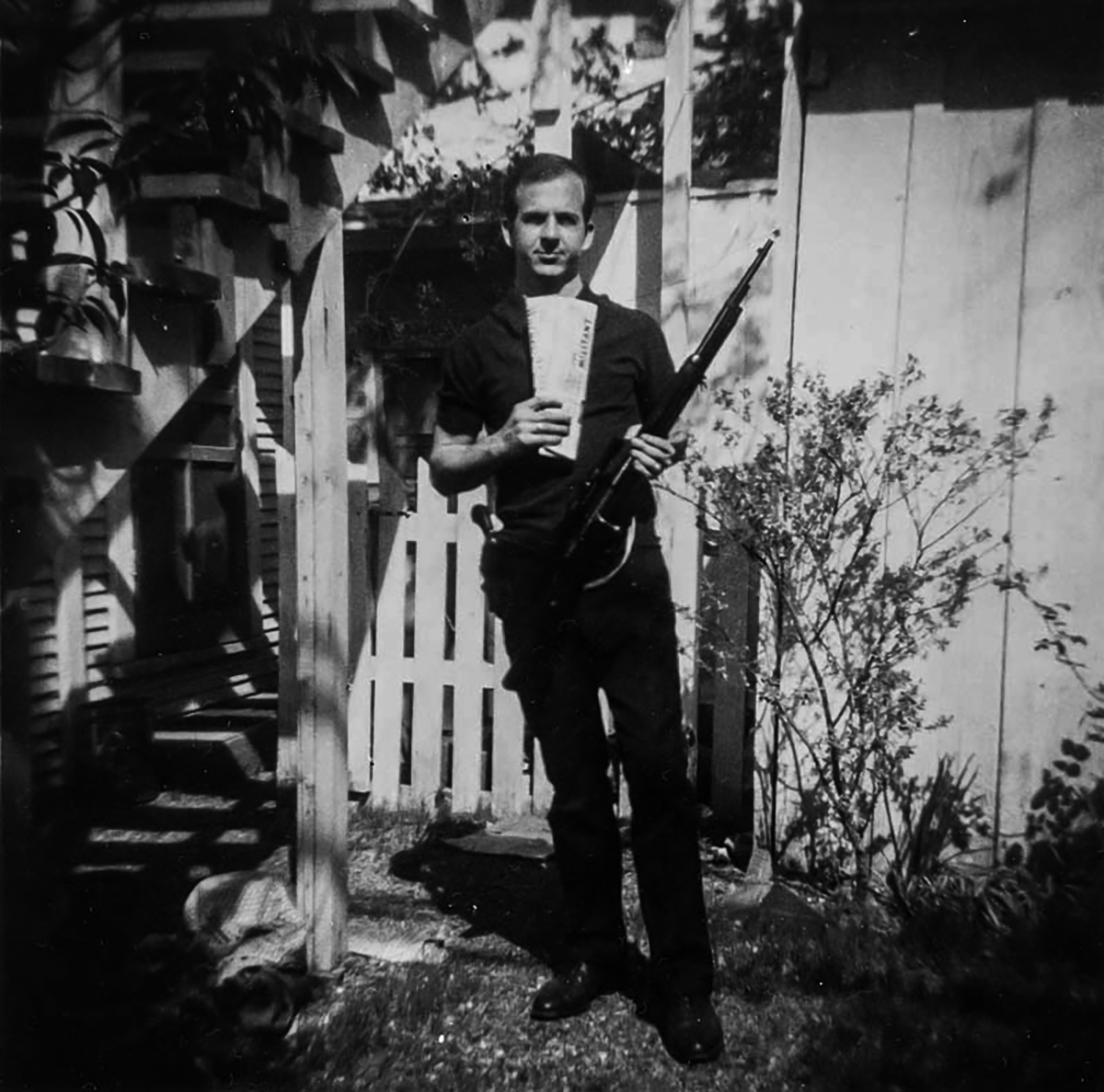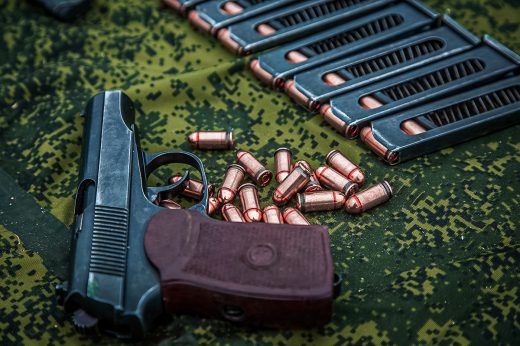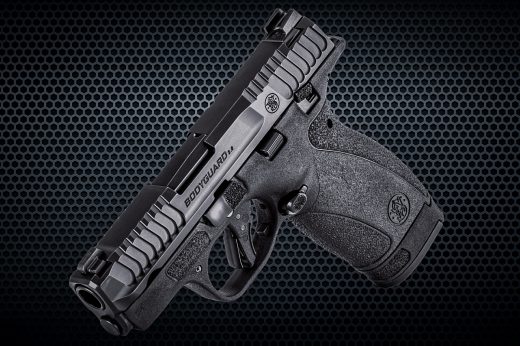Outside of gun collectors and history nerds, few people could positively identify the make and model of a random 130-year-old gun from just one photo. That’s not the case with the M91/38 Carcano rifle.
Hundreds of thousands of people who have never even held a gun before can positively ID that little gun. For younger people who aren’t that into history, they’ll know “The Carcano” as the most powerful and accurate rifle you can get in Red Dead Redemption II. But for the rest of us, this relatively unassuming rifle is just about as recognizable as the two men who are eternally linked to it by a dark time in American history.
The Man Behind the Carcano Rifle

With a name like Salvatore Carcano, the Italian heritage of the gun’s designer cannot be denied. Even though Varese, the city of his birth, was just 30 miles from Milan, Carcano was technically an Austrian when he was born in 1827. Varese was part of Austria’s Lombardo-Venetian Kingdom at that time, a region that wouldn’t be handed over to Italy until 1866.
When he was 21, Salvatore joined the military in 1848. After four years of service, his enlistment ended, and the Royal Arms factory in Turin hired him as a gunsmith. It was there that the young Carcano was able to show his true talents as an arms designer.
He worked on converting older muzzle-loading weapons to needle-fire breechloaders — the new cutting edge of gun tech at the time — but his main claim to fame was the development of the Modello 91 rifle. This rifle combined Carcano’s own design for a bolt with the Mannlicher-style charger, aka a clip or stripper clip on this side of the Atlantic.
RELATED – The Bullpup Doesn’t Deserve to Be in the Dog House
The 6.5 Craze

Chambered for the centerfire 6.5x52mm Carcano cartridge, a rimless bottleneck design, the M91 was Italy’s first rifle designed specifically for use with smokeless powder. It was also the first military rifle to be chambered in what would become a whole slew of 6.5 caliber cartridges: Greece’s 6.5x54mm Mannlicher–Schönauer, Romania and the Netherlands’ 6.5x53mmR Mannlicher, Sweden’s 6.5x55mm Swedish Mauser, Portugal’s 6.5x58mm Vergueiro, and Japan’s 6.5x50mm Arisaka.
On average, the 6.5x52mm Carcano propelled a 162-grain projectile at 2,200 fps with 1,700 foot-pounds of energy. What the cartridge lacked in perceived stopping power, it made up for with a flatter trajectory, and it weighed less so that each soldier could carry more ammo, plus the felt recoil was lighter. Kind of sounds like the story behind the adoption of the M16 and the 5.56/.223 cartridge, doesn’t it?
By the mid-20th century, much attention would be paid to the gun, its cartridge, and their capabilities.

Perhaps more than any other round and gun in history, people still argue to this day about the 6.5x52mm Carcano’s effectiveness in taking down a human target — especially in a specific situation in which the shooter is positioned six stories above a moving target traveling away from the shooter at 11 mph.
RELATED – Sharps Rifle: The Original Long-Range Hunting Gun
M91 Rifle Evolution: Multiple Users and Configurations
As the new Italian service rifle, the M91 would go on to fill that role in one form or another for more than 50 years, not being phased out until after World War II.
During that time, a staggering array of different variations emerged to fill specialized roles as needs arose. These included M91s in the shorter musketoon length with integral folding bayonets or side-mounted bayonets for special troops and the M91/24 musketoon with a longer adjustable rear sight.
The M91 modified musketoon saw multiple modifications to the bayonet and sling attachment methods: the M91/28 grenade launcher; the M91/38 with folding and detachable bayonets in longer infantry and shorter musketoon lengths; and finally, the M91/41 that finished out the evolution through its retirement.

The Carcano rifles, in all of their various configurations, were used worldwide by more than a dozen different countries. Ethiopia used the guns they had captured in 1896; Austria-Hungary converted rifles they had captured during World War I.
Germany issued them to Bulgarian troops after Italy surrendered; Japan and China had purchased them on contract; England sent captured ones to the Netherlands, which in turn sent them to troops in Indonesia. The list goes on and on.
In short, you couldn’t so much as spin in a circle without finding a Carcano somewhere in much of the world in the first half of the 20th century. The design was solid, and it was easily adapted to other common cartridges such as 6.5x54mm Mannlicher-Schönauer and even 8mm Mauser.
The Carcano Rifle as Mail-Order Milsurp

By the time the 1960s rolled around, Carcanos were a common sight on the European continent, but the design was, nonetheless, dated.
With World War II firmly in the rearview mirror, semi-automatic rifles had clearly supplanted bolt-action rifles for military use. This meant that many old workhorse rifles were being replaced worldwide, and the surplus bolt actions — the M91 variants were just some of the guns on the chopping block — began popping up in the United States on the used military surplus market.
By the time John F. Kennedy took up residence in the White House, the milsurp business — which was begun in earnest after the Civil War by Francis Bannerman VI — had really hit its stride.

In this era, before the Gun Control Act of 1968, milsurp rifles were both affordable, plentiful, and available for delivery right to your door by mail order.
To many of today’s gun aficionados, the ability to travel back in time to 1963 and buy a pile of guns would be a dream come true. All you had to do was thumb through any magazine and take your pick. Finnish Mosins were just $16.95. Krag carbines fetched $15, with bayonets available for 40 cents more. M1903 Springfields could be had for $36.38 and M1917s for $29.88. Sporterized British Enfields were $19.88. Even with inflation, those are great prices.
In March 1963, Lee Harvey Oswald was thumbing through the February 1963 issue of the NRA’s American Rifleman magazine when he saw an ad from Klein’s Sporting Goods in Chicago for 6.5 caliber Italian carbines. With iron sights, the gun was just $12.88, but for $19.95 ($198.92 in 2023 dollars), one could be had with a brand-new 4x scope.

Oswald opted for the latter, ordering a Carcano under an alias and having it delivered to his P.O. Box in Dallas less than two weeks later.
According to the gun in the ad, Oswald ordered a musketoon-length carbine designated the M91 TS, which was originally introduced in 1898 for use by machine gun, mortar, and motorcycle crews. Klein’s had sold out of those guns, so what they sent instead was the similar M91/38.
At first glance, the two guns are identical, but with a closer look, differences appear: The M91/38 had a trapdoor in the buttstock for the cleaning rod, whereas the M91 TS had the cleaning rod mounted under the barrel, the M91/38 had a groove on each side of the grip for ergonomics, whereas the M91 TS had no such groove, and the stock on the M91/38 terminated far back from the muzzle, whereas the M91 TS went all the way to the muzzle.
RELATED – Falling in Love With the Winchester Model 94
One Fateful Day in Dallas
On November 22, 1963, Lee Harvey Oswald went to work at the Texas School Book Depository, located along the route that would be taken by President John F. Kennedy’s motorcade later that day. By the time the sun had set, Kennedy was dead, as was Dallas Police Officer J.D. Tippit, and Oswald was in police custody. The rest, as they say, is controversial history.
The Carcano Rifle Thrust Into the Limelight of History
Had it not been for Oswald’s actions, it’s possible that the M91/38 Carcano would have faded into history as just another European bolt gun from the Great Wars. Instead, it’s probably more relevant today than it ever was.
The gun reached its first level of fame in 1963 when the public first saw the iconic photo of Lt. J.C. Day (at the top of this story), who held the firearm over his head in a crowded room for all to see not long after it had been recovered in Dallas.

Then there were conspiracy theories that focused solely on the gun itself — aside from the broader conspiracy theories surrounding Kennedy’s assassination. For example, some argue that Oswald didn’t pull the trigger because the gun that was found in the Texas School Book Depository didn’t look like the one in Klein’s magazine ad, the reason or which is explained above — Klein’s was out of the model in the ad and sent a substitution.
That was probably the first time in a long time that people bothered to get down into the nitty-gritty details of the differences in Carcano models. There were also endless arguments and conflicting opinions about the rifle’s accuracy and the capabilities of its 6.5x52mm ammo, not to mention Oswald’s marksmanship abilities and magic bullets.
In today’s world of gun collecting, there are people who have to have an M91/38 because they’re huge fans of Italian guns. Others want one simply because of the Oswald connection. No matter the reason, examples of the M91/38 can still be had for an average price of $350, which more expensive than it was in 1963, but still a lot cheaper than most milsurp guns these days — and that’s even with the Italian rifle’s notorious place in U.S. history.
This content was originally posted on July 26, 2023
READ NEXT – The Bolt Action Rifle: A Massive and Enduring Leap for Gun Tech










Comments